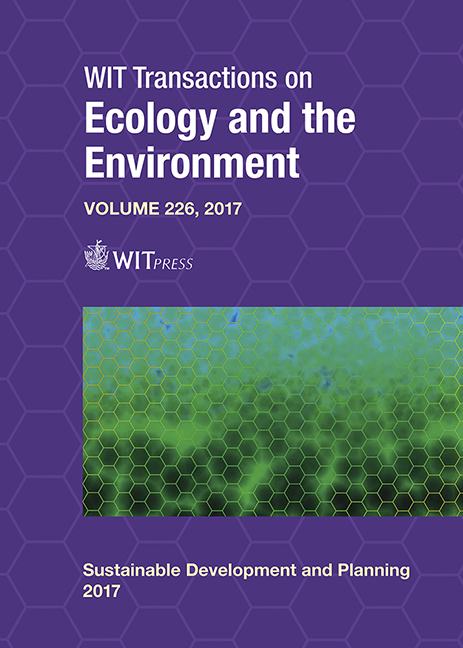CASE STUDIES OF ENVIRONMENTAL THE QUALITY OF BUILDINGS DAMAGED BY EARTHQUAKES, PRIOR TO ADAPTIVE RECONSTRUCTION: PALAZZO MOSCARDELLI IN OFENA AND EX-COLONIA IX MAGGIO AT MONTELUCO DI ROIO, L’AQUILA, ITALY
Price
Free (open access)
Transaction
Volume
226
Pages
14
Page Range
59 - 72
Published
2017
Size
565 kb
Paper DOI
10.2495/SDP170061
Copyright
WIT Press
Author(s)
ANGELA LOMBARDI, JOHN MURPHY JR, ANTONELLA IANNARELLI, SIMONETTA CIRANNA, PATRIZIA MONTUORI, ELSA G. DE LEON
Abstract
As a community responds to a case of earthquake disaster with regard to rebuilding a largely historic building rich environment, many things are considered: structural viability, remnant percentage of original structure, safety of remnant structure in which to work, assessment of its development over time, cultural value of replacing the building with facsimile of historic structure, residual value of the property, and many others. When deemed appropriate and beneficial to reconstruct a damaged historical building, one often overlooked aspect of design and planning is the assurance of environmental quality/indoor air quality. The country of Italy is a productive area for study in this regard based upon its central geological fault line that has shown a recent propensity to shift and its largely historic built environment. This research analyses two historic structures that have been damaged in the central Italy earthquake of 2009, specifically in the cities of L’Aquila and Ofena, which are planned for reconstruction and adaptive reuse. Research into the history of each structure, their uses over time, design principles, and construction methodology were completed. In addition, the testing protocol and documentation are presented, testing and sampling were completed for climatological data, and both indoor and ambient measurements for particulate counts, gases, total volatile organic compounds (VOCs), and bio aerosols. Further explanation as to the specific importance of bio-aerosol surveys is explained. The equipment utilized includes a GX-2009 Gas Detector, Bio-Pump Plus bio-aerosol analysis, Model P311 Particle Counter, a Kestrel Weather Tracker, and VOC Canister sampling. The test results are analyzed and compared to WHO exposure limits. Suggestions regarding pollutant source control for environmental quality through some proposed suggestions for reconstruction strategies are presented, as well as providing data for possible future standardized processes for pre-design analysis for the adaptive reuse of damaged historic structures.
Keywords
historic buildings, post-earthquake reconstruction, indoor air quality, environmental quality, adaptive reuse, bio aerosols, pathogens, bio organisms, radon gas





